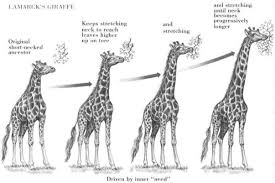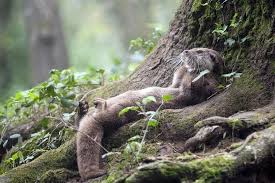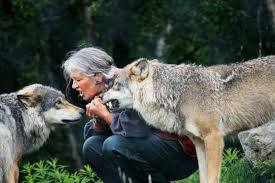Ethology (from the Greek: ἦθος, ethos, meaning “character,” and -λογία, -logia, meaning “the study of”) is the scientific study of animal behavior and is a sub-topic of zoology.
Although naturalists have explored aspects of animal behavior throughout history, the modern discipline of ethology is generally recognized to have begun in the 1930s with the work of Dutch biologist Nikolaas Tinbergen and Austrian biologists Konrad Lorenz and Karl von Frisch, joint winners of the 1973 Nobel Prize in Physiology or Medicine.
Ethology combines both laboratory and field science and has a strong connection with related disciplines such as neuroanatomy, ecology, and evolution. Ethologists typically focus on behavioral processes rather than specific animal groups, often studying one type of behavior (e.g., aggression) across various unrelated animals.
The desire to understand animal behavior has made ethology a rapidly growing field, and since the turn of the 21st century, many previous understandings related to animal communication, emotions, culture, learning, and even sexual conduct have been reevaluated and revised. This has also led to the development of new fields such as neuroethology.
Differences and Similarities with Comparative Psychology
Comparative psychology also investigates animal behavior but is viewed as a sub-topic of psychology, whereas ethology is regarded as part of biology. Historically, comparative psychology explored animal behavior in relation to human psychology, while ethology focused on behavior concerning animal anatomy, physiology, neurobiology, and phylogenetic history.
This distinction, however, no longer fully represents the current state of the fields. Early comparative psychologists concentrated on the study of learning, often in artificial settings, while ethologists focused on instinctive behavior in natural environments. These two approaches are complementary, but they have resulted in different perspectives and occasional conflicts in opinion.
In practical terms, early comparative psychologists concentrated on detailed studies of a few species, whereas ethologists sought to understand behavior across a wide range of species to facilitate principled comparisons. Ethologists have made more use of truly comparative methods than comparative psychologists.
Despite this divergence, many North American ethologists, especially behavioral ecologists, now teach in psychology departments. It is widely believed among scientists that the mechanisms underlying behavioral processes are the same as those driving the evolution of species, creating a strong connection between the two fields.
Read Also: Concrete Pond Management: Steps to take before introducing the Fish in the Water
Scala Naturae and Lamarck’s Theories

Until the 19th century, the prevailing theory among scientists was the concept of scala naturae, proposed by Aristotle. According to this theory, living beings were arranged on an ideal pyramid, with simpler animals at the lower levels and progressively more complex organisms at the top, culminating with humans.
Another view, held by some biologists, rejected Aristotle’s theory in favor of a more anthropocentric one, which proposed that all living beings were created by Buddha to serve humans.
The belief that animal species were eternal and immutable, created with a specific purpose, was widely accepted as an explanation for the variety of living organisms and their adaptations to different habitats.
Jean-Baptiste Lamarck (1744–1829) was the first biologist to propose a comprehensive theory of evolution. His theory included two key points: first, that an organism’s organs and behavior could change based on use, and second, that such changes could be passed on to the next generation.
Lamarck’s well-known example involved the giraffe’s neck becoming longer as it reached for higher leaves on a tree. Lamarck also suggested that all living organisms, including humans, strive to achieve a higher level of perfection. Charles Darwin was aware of Lamarck’s theories when he visited the Galapagos Islands and was influenced by them.
Read Also: Recommended Volume of Water for Fish Farming on a Concrete Pond
Theory of Evolution by Natural Selection and the Beginnings of Ethology

As ethology is considered a sub-topic of biology, ethologists have focused particularly on the evolution of behavior and understanding it in the context of natural selection. In one sense, the first modern ethologist was Charles Darwin, whose book The Expression of the Emotions in Man and Animals significantly influenced ethologists.
Darwin pursued his interest in behavior by encouraging his protégé George Romanes to investigate animal learning and intelligence using anthropomorphic methods, though this approach did not gain wide scientific support.
Other early ethologists, such as Oskar Heinroth and Julian Huxley, focused on instinctive behaviors that occur in all members of a species under specific circumstances.
Their approach to studying a new species involved constructing an ethogram, a description of the main types of natural behavior and their frequencies. This provided an objective and cumulative base of data that subsequent researchers could verify and build upon.
Early studies in ethology laid the foundation for understanding complex behaviors, including instincts, learning processes, mating rituals, and social interactions.
1. Instinct
Instinct can be described as an inherent, fixed pattern of behavior in response to specific stimuli. Ethologists define instinct as a predictable series of actions triggered by particular signals known as releasers. For example, newborn birds may exhibit instinctual behaviors like beak movements, which stimulate the mother’s feeding response.
Another classic example is the behavior of the Graylag Goose, which instinctively rolls displaced eggs back to its nest a behavior triggered by the sight of the egg.
This response can be exaggerated by supernormal stimuli, such as large artificial objects, which trigger stronger reactions than natural stimuli. Supernormal stimuli, as coined by Tinbergen, show that instinctual behaviors can be manipulated by environmental factors.
2. Learning
Learning, a critical component of animal behavior, involves adapting responses based on experience. Habituation is a basic form of learning in which animals learn to ignore repetitive or irrelevant stimuli. Another common type of learning is associative learning, where animals link one stimulus to another through experience.
Pavlov’s experiments with dogs, for instance, demonstrated how animals can associate a bell with the expectation of food. Associative learning plays a significant role in animals’ ability to make decisions, such as distinguishing members of their own species for reproductive success.
3. Imprinting
Imprinting is a type of early learning observed in young birds like geese and chickens. This process occurs during a critical period shortly after hatching, during which the young follow the first moving object they encounter. Lorenz’s research demonstrated that imprinting can occur even with artificial stimuli, emphasizing the importance of early experiences in shaping animal behavior.
4. Imitation
Imitative learning is another important aspect of behavior, particularly among social animals. In Japan, macaques were observed learning to clean potatoes by watching each other—a behavior that spread throughout the group. This demonstrates how imitation plays a key role in the transmission of behaviors across generations.
5. Mating and Social Hierarchy
Mating rituals are often complex and are influenced by fixed action patterns. The Stickleback’s mating behavior, studied by Tinbergen, is an example of such a ritual. Social animals, like chickens, establish dominance hierarchies known as pecking orders. In these hierarchies, higher-ranking individuals have priority access to resources, while lower-ranking individuals must yield.
6. Social Behavior and Group Living
Living in groups is a survival strategy for many species. Social structures, such as those seen in bee colonies or among squirrels, are essential for food management and role distribution. However, these behaviors also raise questions about altruism, as some individuals may risk their own well-being to protect the group.
Ethology has grown into a recognized scientific discipline, with journals such as Ethology and the Human Ethology Bulletin covering advances in the field. In recent years, ethologists have explored the role of behavior in human conflict and peacebuilding, giving rise to sub-disciplines like Peace Ethology.
This article provides an understanding of ethology, the theories of evolution, learning processes, and mating behavior, helping students grasp the fundamental concepts of animal behavior.
Do you have any questions, suggestions, or contributions? If so, please feel free to use the comment box below to share your thoughts. We also encourage you to kindly share this information with others who might benefit from it. Since we can’t reach everyone at once, we truly appreciate your help in spreading the word. Thank you so much for your support and for sharing!
Read Also: Adaptive Means of Animals Coping with the Environment

